AIR SPOTLIGHT
STRIDES IN THE AGRICULTURE SECTOR
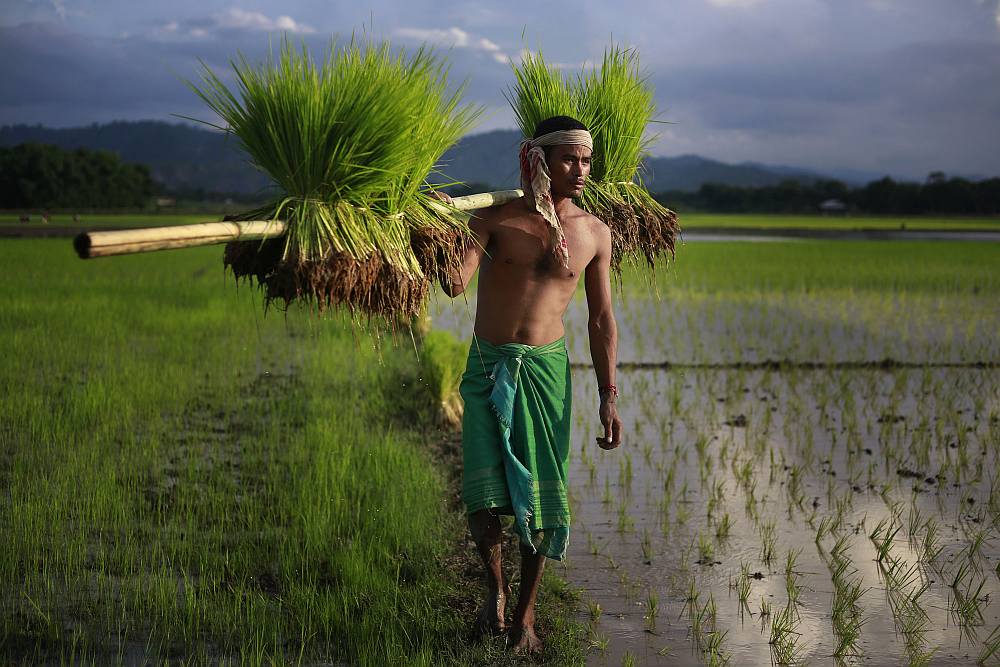
Disclaimer: Copyright infringement not intended
Context
- Indian agriculture is typically identified with the ‘Green Revolution’ that started in the 1960s enabling the nation to make great strides in domestic food production and significantly contributing to progress in agriculture and allied sectors. It transformed India from a food-deficit nation to a food-surplus, export-oriented country.
- The country is known for its diversity of farming practices. It is important to get diverse points of view engaged in a national-level dialogue to find suitable solutions for the future.
Journey of the agriculture sector since independence
- The journey of agriculture has been divided into three phases:
- In the first phase i.e., immediately after independence, India was able to bring large areas under agriculture. The government at that time considered agriculture as the main source of growth. However, by mid-1960s India entered into a crisis. With low economic development India was not able to meet its requirements even through imports and hence, faced large-scale problems of under-nutrition and hunger.
- The second phase, started with the ‘green revolution in the late-1960s. Since then, Indian agriculture has moved ahead.
- In the third phase, the growth rate of agricultural production remains high that despite its large population, India was able to produce two times the food production of the population.
India has moved away from a dark period of shortages and deficits with much agricultural produce to a surplus in many commodities. In the last 75 years, there have been a lot of technological advances also in the agricultural sector.
What has been the main trigger for this increase in food production?
- The growth in agriculture started with an era of five-year planning in 1950-51. Under this, India came up with large-scale reforms including land reforms, irrigation facilities and the development of rural infrastructure. Such measures created the ground for the growth of agriculture.
- However, the technology available at that time was not sufficient to push for agriculture growth. So, the ‘green revolution technology with policy-support from the government has attributed to the growth in agricultural production.
There are some areas in agriculture which reflect that the agriculture sector lacked balanced growth which is impacting the crude production growth in some commodities.
Why India is witnessing the skewed growth in agriculture?
- The major reason for the disparity in agricultural commodities is the demand for staple foods. The Government of India initially focused on rice and wheat as they were demanded by the vast majority in India.
- Once reaching self-sufficiency in staple food, India paid attention to dairy farming. And soon India was able to increase its production of pulses and fishery by 60% and 7% respectively
- Edible oil, however, India lacks self-sufficiency and remained heavily dependent on imports. By looking at the intake or demand of edible oil by Indians, the Government of India has come up with various initiatives like National Mission on Oil Palm. Hence, in the coming years, it is expected that India will increase its domestic production and will decrease its imports.
The farmers’ income is considered the main drawback of the agricultural policies
- The Government of India earlier expected that with an increase in agricultural production there will be an automatically increased in the income of farmers. But this has not brought the desired result. It moreover increased the disparity or inequality in the income of farmers.
- Therefore, Prime Minister Narendra Modi gave the slogan ‘doubling farmers’ income’. The government has aimed that once addressing the shortages of foodgrains or achieving self-sufficiency, the paradigm shift is to give primacy to the increase in income of farmers.
- The government even constituted an Inter-Ministerial Committee in 2016, the committee recommended seven ways to increase farmers’ income:
- Improve crop productivity
- Improve livestock productivity
- Resource use efficiency or savings in the cost of production
- Increase in the cropping intensity
- Diversification towards high-value crops
- Improvement in real prices received by farmers
- Shift from farm to non-farm occupations
Among the Inter-Ministerial Committee recommendation what could be the driving forces?
- First, the green revolution has shown that the increase in productivity will ultimately increase the income of farmers. Hence, the government is focusing on bringing the green revolution to Eastern India with modern agricultural technologies to remove the inequality among farmers.
- The second source of growth is the high-valued crops which are more demand-driven like fruits and vegetables. The dependence on horticulture crops can give 3-6 times more income than the other field crops.
- The third source of growth could be the prices received by the Indian farmers. Proper utilization of resources and improving competitiveness in the market enable farmers to get better prices.
- The fourth important source of growth is to enhance the possibility of non-farm income by the farmers. This will not only increase farmers’ income but will also decrease the disguised unemployment in the agricultural sector.
The marketing of agricultural produce remains a big challenge in India. There have been a lot of measures put into the public domain.
What more should be done to ensure the proper market for agricultural produce?
- Increasing the scope of income guarantee schemes like Minimum Support Price (MSP) and Price Deficiency Payments (PDP) to ensure the income of the farmers.
- To make the market competitive, there is a need for private participation. Many states are trying to harness this opportunity to increase the interest of the private sector and attract investments in agricultural markets, logistics, processing, etc.
- To address an ecological challenge like water deficiency, the government should focus on the adoption of improved technology not only to increase production but also to improve efficiency.
The main solution to agricultural problems lies outside the sector. This means Indian land is productive but the due to lack of irrigation and other related facilities has not increased the productivity. Hence, the major focus of the government should be to increase employment opportunities outside the primary sector, most preferably in the secondary sector. Hence, initiatives like Atmanirbhar Bharat will be a major force for the required growth in the Indian economy.
https://newsonair.gov.in/Spotlight.aspx#
https://t.me/+hJqMV1O0se03Njk9
NEWS IN BRIEF: PRELIMS SPECIAL
Citizen Survey for National Curriculum Framework
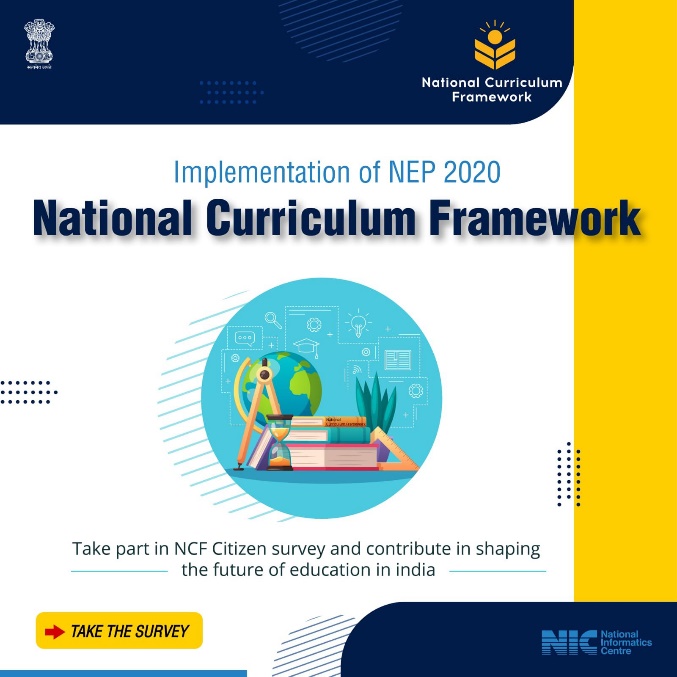
Disclaimer: Copyright infringement not intended.
Context
- Union Minister of Education Dharmendra Pradhan urged the citizens to participate in the Citizen Survey for National Curriculum Framework for developing a new curriculum.
- Ministry of Education has invited suggestions of the public through an online public consultation survey for the formulation of the National Curriculum Framework and subsequently design of syllabus, textbooks and other instructional materials.
About National Curriculum Framework (NCF)
- As per the National Education Policy, 2020, the following four NCFs will be developed:
- National Curriculum Framework for Early Childhood Care and Education (NCFECCE)
- National Curriculum Framework for School Education (NCFSE)
- National Curriculum Framework for Teacher Education (NCFTE)
- National Curriculum Framework for Adult Education (NCFAE)
- In this regard, a comprehensive strategy has been worked out jointly by the Ministry of Education (MoE) and NCERT.
- As per this strategy, at the State level- all states/UTs will first prepare their State Curriculum Frameworks (SCFs) passing through the process of district-level consultations, mobile app survey and development of position papers by the State Focus Groups in 25 areas/themes identified as per the NEP, 2020 including ECCE, Teacher Education and Adult Education.
- These draft SCFs will provide inputs to the development of NCFs. States/UTs and Autonomous organisations working under MoE, all will attempt this process to provide inputs for the NCFs. Recommendations for NEP, 2020 will be kept in view during the whole process.
- At the National level, NCERT will survey MyGov Portal and get feedback from diverse stakeholders on the issues related to curriculum implementation.
https://newsonair.gov.in/News?title=Education-Minister--Dharmendra-Pradhan-urges-citizens-to-participate-in-Citizen-Survey-for-National-Curriculum-Framework-in-achieving-%26%2339%3bViksit-Bharat%26%2339%3b&id=446077
https://t.me/+hJqMV1O0se03Njk9

Health Professional Registry
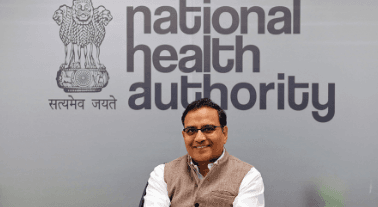
Disclaimer: Copyright infringement not intended.
Context
- The National Health Authority (NHA) has announced performance-based fund allocation to State and Union Territories for strengthening the registries of healthcare professionals and health facilities.
- This performance-based fund allocation will help in the structured implementation of the Ayushman Bharat Digital Mission.
About Health Professional Registry (HPR)
- The Health Professional Registry (HPR) is a comprehensive repository of all healthcare professionals involved in the delivery of healthcare services across both modern and traditional systems of medicine.
- HPR is a core building block of the Ayushman Bharat Digital Mission (ABDM).
- Through HPR, healthcare professionals can onboard onto India’s digital health ecosystem and connect patients to healthcare providers or vice versa with last mile coverage.
- Benefits of HPR include a unique and trustable identity, online presence and discoverability along with telemedicine and unified digital services.
- A health professional can become part of the HPR by registering on the website of ABDM using their Aadhaar card or Driving License.
About National Health Authority (NHA)
- The National Health Authority (NHA) is the apex body of the Government of India leading the implementation of Ayushman Bharat Digital Mission ABDM in coordination with different ministries/departments of the Government of India, State Governments, and private sector/civil society organizations.
- It will bridge the existing gap amongst different stakeholders of the Healthcare ecosystem through digital highways.
- ABDM shall create a seamless online platform through the provision of a wide range of data, information and infrastructure services, duly leveraging open, interoperable, standards-based digital systems while ensuring the security, confidentiality and privacy of health-related personal information.
- NHA also implements the flagship scheme, Ayushman Bharat – Pradhan Mantri Jan Arogya Yojana (AB PM-JAY).
https://newsonair.gov.in/News?title=NHA-announces-performance-based-fund-allocation-to-states%2c-UTs-for-strengthening-registries-of-healthcare-professionals%2c-health-facilities&id=446083
https://t.me/+hJqMV1O0se03Njk9
Moscow Conference
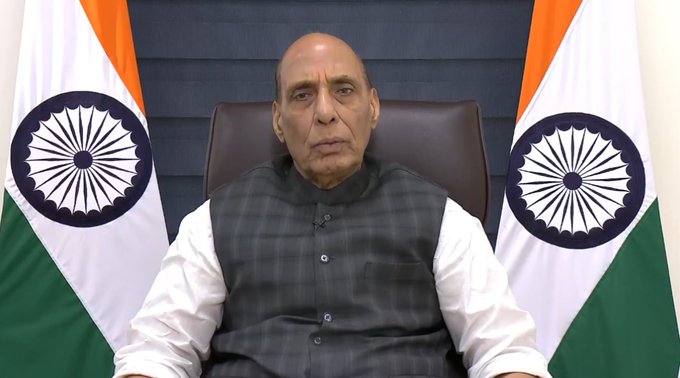
Disclaimer: Copyright infringement not intended.
Context
- Union Defence Minister Rajnath Singh while addressing the plenary session of the Moscow Conference on International Security-2022 has stressed on the comprehensive reform of the United Nations' structure saying that this worrying shortcoming of the United Nations system is a manifestation of its structural inadequacy.
About Moscow Conference
- In 2022 the Ministry of Defence of the Russian Federation organizes the X Moscow Conference on International Security.
- In ten years, a platform for an open dialogue of defence agencies, international organizations and military experts has been established and is successfully functioning.
- Every year the Conference focuses on the need to discuss the most pressing issues of international relations, in the resolution of which an important role belongs to the defence agencies of different states.
- The dominant topics of the previous Conferences were: European security, the transformation of the military situation in the Asia-Pacific region, the Middle East crisis, and security challenges and threats in Latin America and on the African continent.
- The discussions in Moscow have made a significant contribution to the development of international security policy and allowed the participants to get first-hand information on the views of the Russian Ministry of Defence and military agencies of other countries.
- The 2022 Conference program includes the most topical problems of global and regional security, the discussion of which will contribute to enhancing mutual understanding and transparency in military activities.
https://newsonair.gov.in/News?title=Defence-Minister-Rajnath-Singh-addresses-plenary-session-of-Moscow-Conference-on-International-Security-2022&id=446081
https://t.me/+hJqMV1O0se03Njk9
Har Ghar Tiranga
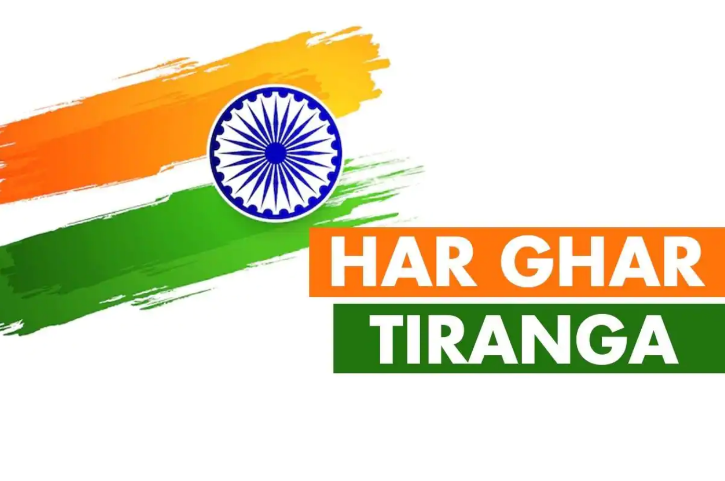
Disclaimer: Copyright infringement not intended.
Context
- More than six crore selfies with Tiranga have been uploaded on the website of Har Ghar Tiranga on 15th August 2022.
About Har Ghar Tiranga campaign
- ‘Har Ghar Tiranga’ is a campaign under the aegis of Azadi Ka Amrit Mahotsav to encourage people to bring the Tiranga home and to hoist it to mark the 75th year of India’s independence.
- Our relationship with the flag has always been more formal and institutional than personal. Bringing the flag home collectively as a nation in the 75th year of independence thus becomes symbolic of not only an act of personal connection to the Tiranga but also an embodiment of our commitment to nation-building.
- The idea behind the initiative is to invoke the feeling of patriotism in the hearts of the people and to promote awareness about the Indian National Flag.
https://newsonair.gov.in/News?title=More-than-six-crore-tiranga-selfies-uploaded-on-Har-Ghar-Tiranga-website&id=446042
https://t.me/+hJqMV1O0se03Njk9
Amrit Kaal
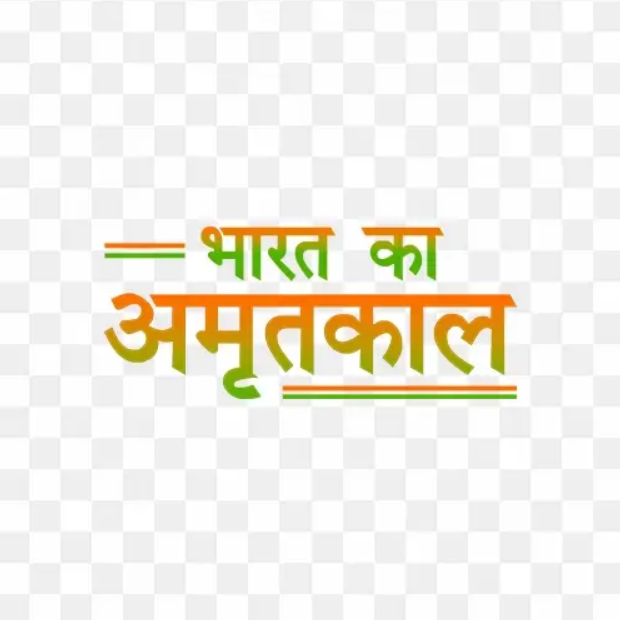
Disclaimer: Copyright infringement not intended.
Context
- Union Minister Piyush Goyal at the inaugural of Public Systems Lab in the Mechanical Engineering Department of IIT, Delhi held that the youth of India should endeavour to make India a developed nation during the Amrit Kaal.
About Amrit Kaal
- The term 'Amrit Kaal' was first used by Prime Minister (PM) Narendra Modi in 2021 during the 75th Independence Day celebrations, when he unveiled a new roadmap for the country for the next 25 years.
- The purpose of Amrit Kaal was to improve the lives of the citizens of India, lessen the divide in development between villages and cities, reduce the government's interference in people's lives, and welcome the latest technology.
- The term comes from Vedic astrology. Amrit Kaal is the critical time when the gates of greater pleasure open for the inhuman, angels and human beings. Amrit Kaal is considered the best and most auspicious time to start new work.
https://newsonair.gov.in/News?title=Union-Minister-Piyush-Goyal-says-youth-of-India-should-endeavour-to-make-India-a-developed-nation-during-Amrit-Kaal&id=446065
https://t.me/+hJqMV1O0se03Njk9









